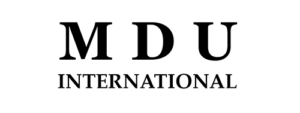Teaching Methods: Definition, Types, Best Teaching Methods For All Levels
One such teaching methodology utilizes group discussions with an entire classroom, or smaller group discussions with numerous small groups at once. Students are encouraged to take responsibility for their education and to be active participants in the learning process. A teaching method is the philosophy or approach that an educator uses to design and deliver instruction to their students. It is the set of strategies, techniques, and principles that guide a teacher’s planning, delivery, and assessment of instruction.
.png)
These examples show how inductive teaching makes learning active and student-centered, turning lessons into hands-on discovery adventures. Kinesthetic Learning is among the teaching method examples that cater to learners who understand and retain information best through physical activities. Instead of just listening or watching, kinesthetic learners benefit from doing, moving, and touching. @irontoenail – That’s why I think that the best methodology for all teachers is to implement teaching by inquiry. This is a methodology where teachers basically investigate their own practice in order to improve their teaching. For example they might teach a class in a certain way and then see whether the students have actually learned anything from that class and how much they have learned.
What is the Abstraction Approach in Teaching? 12 Powerful Insights to Transform Your Classroom! 📚✨
The key is to remain flexible and willing to adapt your approach based on student feedback and learning outcomes. In the diverse world of education, various teaching methods stand out for their effectiveness and adaptability. Dive into these standout approaches that are shaping modern classrooms and enhancing student learning experiences. It is a technique in which teachers group students and ask them to perform a particular task collectively through cooperation.
While a number of different methodologies can be used by a teacher, one common and traditional teaching method is often referred to as lecturing or explaining. This is essentially an approach to education that regards the teacher as an expert on a subject, and he or she provides information to students who are expected to absorb and understand the material. Sometimes derisively referred to as a “sage on the stage” approach, this teaching methodology has lost favor in recent years with many instructors. Even those teachers who do still use this method often supplement it with other methodologies. In the basic structure of a “flipped classroom,” the students first engage the content online (through readings, video lectures, or podcasts), then come to class for the guided practice. It requires explicit communication of learning objectives, procedures, roles, and assessment criteria.
CATEGORIES OF TEACHING METHODS
They can be taught in a one-to-many format using polling technologies or in small teams with group reports. Ideally, all RcsthinkfromtheMiddle.com cases should be debriefed in plenary discussion to help students synthesize their learning. Teaching methods, or methodology, is a narrower topic because it’s founded in theories and educational psychology. If you have a degree in teaching, you most likely have heard of names like Skinner, Vygotsky, Gardner, Piaget, and Bloom. If their names don’t ring a bell, you should definitely recognize their theories that have become teaching methods. Whether you come by your preferred teaching methods organically or by actively studying educational theory and pedagogy, it can be helpful to have a comprehensive working knowledge of the various teaching methods at your disposal.
Instead of a one-size-fits-all approach, content, pace, and learning methods are adapted for individual learners. Teacher-centered learning is one of the classic ways of teaching where the educator is the central figure. In this approach, the teacher is the primary source of information, guiding the flow of lessons, while students primarily listen and absorb knowledge.
Inquiry-based learning encompasses a range of question-driven approaches that seek to increase students’ self-direction in their development of critical-thinking and problem-solving skills. As students gain expertise, the instructor decreases guidance and direction and students take on greater responsibility for operations. Effective teaching in this mode requires accurate assessment of prior knowledge and motivation to determine the scaffolding interventions needed to compensate for the increased cognitive demands on novices. This scaffolding can be provided by the instructor through worked scenarios, process worksheets, opportunities for learner-reflection, and consultations with individuals or small groups.
